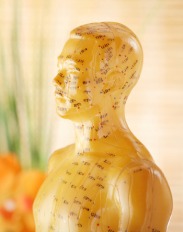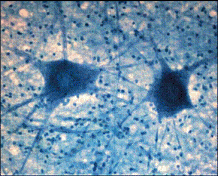How Does Acupuncture Work?
(I) Traditional Chinese Medicine (TCM) Perspective

The general theory of TCM is based on the belief that the body is consisted of more than 71 interrelated channels (or meridians), and there are patterns of blood and energy (qi) that flow through the channels to support, nurture, and connect different organs and parts in the body.
Disruption of the flow is the root cause of all diseases, and acupuncture may correct the disruption by supplementing the deficiency, reducing the excess, and removing the pathogens as manifested in different mental and physical symptoms such as depression (qi is deficient or not moving), menstrual cramps (blood is not moving), insomnia (blood is deficient), or coughing (qi is moving to the wrong direction).
Disruption of the flow is the root cause of all diseases, and acupuncture may correct the disruption by supplementing the deficiency, reducing the excess, and removing the pathogens as manifested in different mental and physical symptoms such as depression (qi is deficient or not moving), menstrual cramps (blood is not moving), insomnia (blood is deficient), or coughing (qi is moving to the wrong direction).
(II) Biomedical Perspective

Insertion of needles into the acupuncture points affects the central nervous system, in which the peripheral nerve impulses send signals to the brain to initiate a series of neuro-chemicals interaction. The levels of endomorphin-1, encephalin, ß-endorphin, opioids, serotonin, and dopamine are increased as a result of the needles being stimulated at the acupuncture points. In other words, acupuncture increases the brain’s production of sedating and pain-reducing chemicals.
Besides affecting the body at the neurological level, acupuncture also has its positive impact at the cellular level. Acupuncture can change the tissue properties, in which fibroblasts are spread and lamellipodia are formed at the sites of insertion. Therefore, acupuncture can promote wound healing through altering the connective tissue mechano-transduction.
Besides affecting the body at the neurological level, acupuncture also has its positive impact at the cellular level. Acupuncture can change the tissue properties, in which fibroblasts are spread and lamellipodia are formed at the sites of insertion. Therefore, acupuncture can promote wound healing through altering the connective tissue mechano-transduction.
Clinical Studies on Acupuncture
(1) Autoimmune Disorders
(I) Asthma
(II) Asthma
(III) Asthma
(IV) Asthma
(I) Allergic Rhinitis/ Seasonal Allergy
(II) Allergic Rhinitis/ Seasonal Allergy
(III) Allergic Rhinitis/ Seasonal Allergy
(IV) Allergic Rhinitis/ Seasonal Allergy
(2) Pain Syndromes
(I) Knee Pain
(II) Knee Pain
(III) Knee Pain
(IV) Knee Pain
(I) Back Pain
(II) Back Pain
(III) Back Pain
(IV) Back Pain
(I) Neck Pain
(II) Neck Pain
(III) Neck Pain
(IV) Neck Pain
(I) Shoulder Pain
(II) Shoulder Pain
(III) Shoulder Pain
(IV) Shoulder Pain
(I) Headache and Migraine
(II) Headache and Migraine
(III) Headache and Migraine
(IV) Headache and Migraine
(3) OB/GYN
(I) Infertility
(II) Infertility
(III) Infertility
(IV) Infertility
(I) Dysmenorrhea
(II) Dysmenorrhea
(III) Dysmenorrhea
(IV) Dysmenorrhea
(I) Menopause
(II) Menopause
(III) Menopause
(IV) Menopause
(4) Mental Health
(I) Addiction
(II) Addiction
(III) Addiction
(IV) Addiction
(I) Depression and Anxiety
(II) Depression and Anxiety
(III) Depression and Anxiety
(IV) Depression and Anxiety
(I) Autism
(II) Autism
(III) Autism
(IV) Autism

A cheerful heart is good medicine, but a crushed spirit dries up the bones. (Proverb 17:22)
All rights reserved @ Danbury Behavioral Health & Acupuncture Associates, LLC.